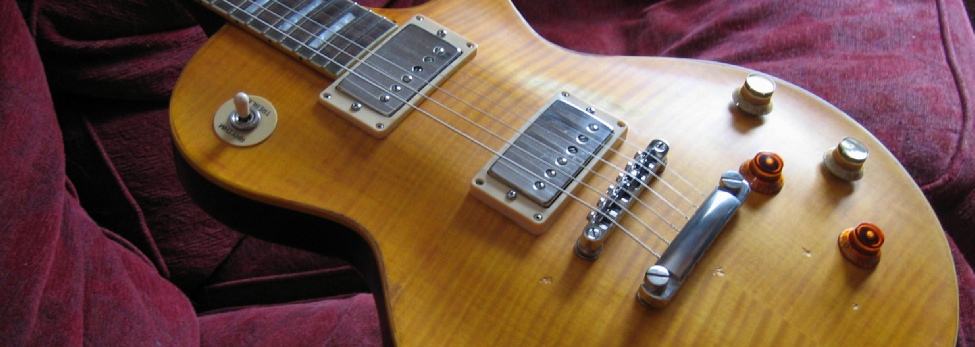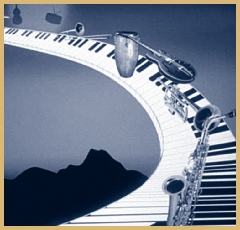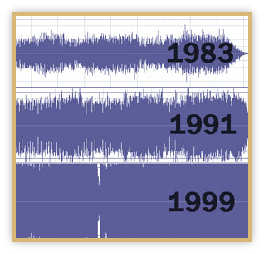






Loudness: What some call ‘The Loudness War’ has been underway since the advent of digital recording and the CD, when software tools began to be developed to push up the perceived loudness on records. One ‘milestone’ in the loudness wars was the 1995 release of ‘(What’s The Story) Morning Glory?’ by Oasis which was mastered incredibly hot at the behest of their producer. In 1998 Metallica’s ‘Death Magnetic’ album even went too far for some of their fans who petitioned for a remix as opposed to the stick of rock waveform (see example in the picture left) they got on the album. For a one and a half minute video of what the loudness war is all about click here. This was made by a pressure group in Germany called the Pleasurize Music Foundation who campaign for a return to sensible levels so that modern pop and rock music is given back some dynamic range (the difference between loud parts and quieter parts) to make it more pleasurable to listen to.
Ok, here’s my personal view. Firstly, the desire of record companies to make their records louder (singles especially) than the rest isn’t new: it dates back to the 60s when juke boxes were popular and rock music arrived. Loudness is associated with excitement and impact. Record companies felt that if their 45RPM single didn’t jump out as being at least as loud as the rest then it didn’t make as much impact, and sales. Listen to hits like ‘Nut Rocker’ and ‘Telstar’ and early Kinks singles and you can hear how some of their dynamic range has been sacrificed in favour of loudness. But here’s the crucial difference between then and now. Firstly, mastering engineers in the pre-CD age could only squeeze so much loudness out of a record before there would be risks of the needle actually jumping out of the groove on the customer’s copy of it. Secondly, pushing analogue loudness caused recording tape systems to go into distortion in a very gradual and not unpleasant way. In the digital world the first constraint is gone, but there is no such thing as gradual digital distortion - it kicks in at a set point and is unpleasant. This in turn has lead to the development of software that emulates ‘tube saturation’ or ‘analogue warmth.
Having said all that, I fear the Pleasurize Music Foundation are a voice in the wilderness. Money rules. The industry will only change when all its players decide customers have had enough and sales of product are impaired. No single player can afford to step out of line on a principle. There’s no doubt that there’s been an escalation in the loudness wars since the 1980s, see picture Left, middle. I simply can’t listen to a lot of modern tracks for example by Kelly Rowland, Girls Aloud et al, as I find the complete lack of dynamic range very fatiguing to the ears, and I know I’m not the only one.
I try to make my recorded songs as loud as possible but only within the confines of musical clarity; as soon as artefacts set in and important peaks and contrasts are lost I back off the loudness knob. And that’s what you should do. It also depends on the genre of music: you can squash the daylights out of a dance track in order to make it super-slamming-loud because that’s what the punters want, which explains why the only way to introduce any light and shade at all into such tracks is to have nearly all the instruments simply drop out for a while in ‘the breakdown’. Hardly dynamic range.
Mixing: This isn’t the place to try and teach you how to mix - it’s a huge topic and there are plenty of books that can help you. But there’s a first class primer on the subject by a ‘Jezar’ which is floating about on the internet called ‘How To Mix A Pop Song From Scratch’ and you can download it here if you haven’t seen it already. Even if you already know the basics I STRONGLY recommend you read it and I guarantee you’ll learn something new.
Go to the next page for my crucial mixing tips...



